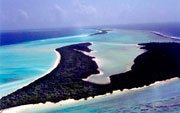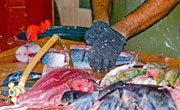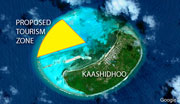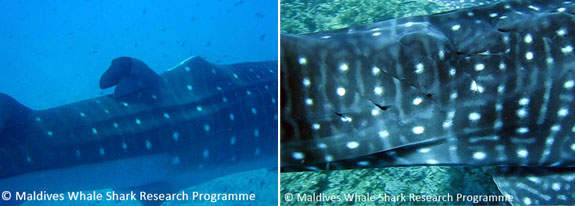| |
 |
| Hudhufushi - Dhiffushimaadhoo Area Should be Declared as Nature Reserve |
 |
| During the last few years, we have been witnessing a rapid human encroachment on the terrestrial vegetation, reef and wetland ecosystems of uninhabited islands and inhabited islands in the Maldives... read more |
| |
| When Groundwater Turns Deadly |
 |
| The sad deaths of five young men in a well in Malé Fish Market on 3 March 2008 (Youth Day in the Maldives) shocked the people of the Maldives... read more |
| |
| Towards an Artificial Paradise on Earth |
 |
| The Government has recently announced plans to develop ten artificial islands by reclaiming natural lagoons of inhabited islands... read more |
| |
|
|
|
| |
Environment
News, Articles and Reports
| Danger to whale shark in the Maldives |
| By Tim Davies |
| Resident Marine Biologist, Four Seasons Landaa Giraavaru, Maldives (2008) |
|
|
| The Maldives Whale Shark Project studies the whale shark population here in the Maldives, collecting whale shark sightings from throughout the atolls to build up a picture of the structure and movements of these colossal sharks. Through collaboration with visiting researchers and various dive centres across the Maldives we have built up a comprehensive photographic database from over 400 sightings going back several years, and from this we have already identified almost 90 individual sharks. Virtually all of these sharks are male – we have only 3 recorded females – and all are less than 9m in length, which suggests they are still immature. These population characteristics are similar to other known populations of whale sharks around the world, but our research suggests that many of the whale sharks in the Maldives are resident here year round – and this is unique within the Indian Ocean. How long they stay in the Maldives we don’t yet know, but it is clear that at some point they do leave the atolls and disappear into the unknown. |
| |
 |
| |
| We know whale sharks make seasonal movements between the atolls during the year. We know that the same sharks are being seen in South Ari Atoll during one part of the year, and in Baa Atoll during another where they have come to feed. We are hoping that with more photographic data from elsewhere in the Maldives we can begin to learn more about whale shark migration patterns within atolls; where do these sharks travel, and for what purpose? But we also want to answer possibly the most important question in conservation; of how many whale sharks are there in Maldives? |
| |
| Even with their protected status, whale sharks are still under threat in the Maldives. In May we received photographic evidence of what appears to be a failed attempt to remove a whale shark’s valuable dorsal fin. Whale shark fins are still purchased for thousands of dollars by restaurants wanting to advertise shark fin soup on their menu, even though the fin itself is not actually used in the soup. In July we also heard unconfirmed reports that several whale sharks had been killed in North Ari Atoll – so whale sharks may still be a target of some fishermen. |
| |
 |
| |
| But the greatest threat to whale sharks in the Maldives is injury from boats. A quarter of the sharks in our database have significant scarring on their body or fins, and almost all of this can be attributed to boats. The worst injuries come from boat propellers and can cause severe cuts, amputate fins, and possibly even kill the sharks. Where these boat collisions are occurring is still unclear? Some injuries could be the result of careless tourist boats at whale shark watching hotspots, but some of the more severe injuries may well result from high speed collisions away from these sites in open water. This is a question the Maldives Whale Shark Research Programme wants, and needs, to answer so we can do more to protect our unique population of whale sharks. |
| |
| For more information about our research, and whale sharks in general please visit our website www.whalesharkresearch.co.uk |
| |
|
|